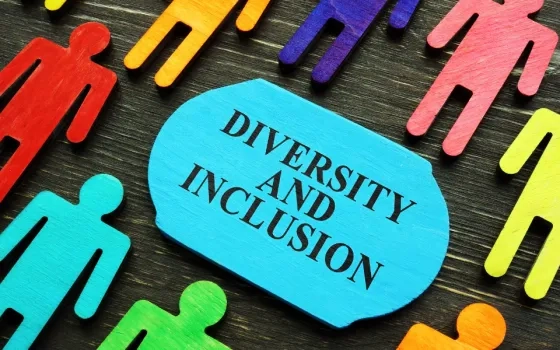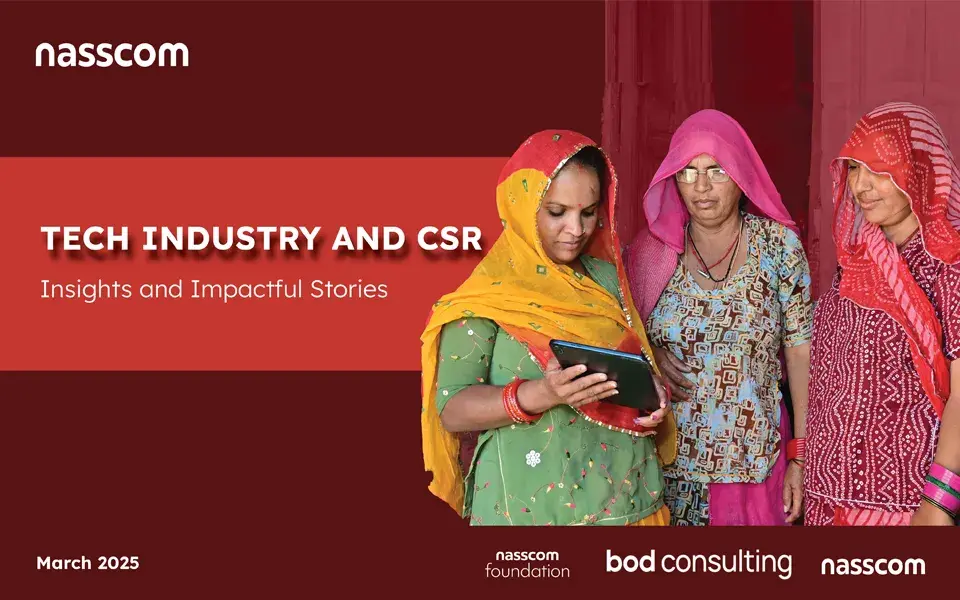In today’s globalized and interconnected world, organizations recognize the importance of embracing diversity and promoting an inclusive work environment. This article will explore the impact of diversity and inclusion on business performance, the current state of diversity and inclusion in recruitment, strategies for promoting diversity and inclusion, building an equitable workforce beyond recruitment, and measuring the success of diversity and inclusion efforts.
Understanding the Importance of Diversity and Inclusion in the Workplace
Before delving into the specifics of navigating diversity and inclusion in recruitment, it is crucial to understand the significance of these concepts in the workplace. Diversity refers to the range of differences among individuals, including but not limited to race, gender, age, ethnicity, sexual orientation, disabilities, and socioeconomic backgrounds. Inclusion, on the other hand, refers to creating an environment where all individuals feel valued, respected, and empowered to contribute their unique perspectives and talents.
Diversity and inclusion are not just buzzwords; they are fundamental components of a thriving and successful organization. When a company embraces diversity and fosters inclusion, it benefits not only the employees but also the overall business performance.
The Impact of a Diverse Workforce on Business Performance
A growing body of research has shown that diversity in the workforce leads to better business performance. Studies indicate that diverse teams generate more innovative ideas, improve problem-solving abilities, and drive creativity and productivity. When people from different backgrounds come together, they bring a variety of experiences, knowledge, and skills, which can lead to more comprehensive and effective solutions.
Moreover, a diverse workforce enhances customer satisfaction. Customers come from all walks of life, and having a team that reflects the diversity of your customer base can help in understanding and meeting their needs more effectively. By embracing diversity, organizations can tap into a wider range of perspectives and insights, enabling them to develop products and services that resonate with a broader audience.
The Role of Inclusion in Employee Satisfaction and Retention
While diversity is essential, inclusion is equally important in ensuring employee satisfaction and retention. An inclusive work environment allows individuals to feel a sense of belonging, be their authentic selves, and engage fully in their work. When employees feel valued and supported, they are more likely to be motivated, productive, and committed to their organization’s success.
Inclusive organizations prioritize creating a culture of respect, fairness, and equal opportunity. They provide employees with the necessary resources, support, and development opportunities to thrive in their roles. Inclusive leaders actively listen to their employees, encourage open dialogue, and take action to address any barriers or biases that may hinder inclusivity.
When employees feel included, they are more likely to stay with the organization for the long term. High employee turnover can be costly and disruptive to a company’s operations. By promoting an inclusive environment, organizations can attract and retain top talent, creating a stable workforce that contributes to sustainable growth and success.
In conclusion, diversity and inclusion are not just ethical imperatives; they are also strategic business imperatives. Embracing diversity and fostering inclusion leads to better business performance, improved problem-solving abilities, enhanced customer satisfaction, and higher employee satisfaction and retention. Organizations that prioritize diversity and inclusion are better equipped to adapt to an ever-changing world, seize new opportunities, and drive innovation and success.
The Current State of Diversity and Inclusion in Hiring
Despite the recognition of the importance of diversity and inclusion, many organizations still face challenges in achieving equitable recruitment practices.
In today’s globalized and interconnected world, diversity and inclusion have become crucial elements for organizations striving to thrive in a rapidly changing landscape. The benefits of a diverse workforce are well-documented, including increased innovation, enhanced problem-solving capabilities, and improved financial performance. However, achieving true diversity and inclusion in hiring remains an ongoing challenge for many organizations.
Common Challenges in Achieving Diversity and Inclusion
One common challenge organizations encounter is unconscious bias in recruitment. Unconscious biases, such as affinity bias or stereotypes, can lead to the unintentional exclusion of qualified candidates from underrepresented groups. These biases can manifest in various ways, from resume screening to interview evaluations, and can significantly hinder the hiring of diverse talent.
Another challenge is the lack of diverse talent pipelines. Historically marginalized groups, including women, racial and ethnic minorities, and individuals with disabilities, often face barriers to entry and career progression. These barriers can include educational disparities, limited access to networking opportunities, and systemic biases within organizational structures. As a result, organizations must take proactive measures to expand their talent pipelines and create pathways for individuals from underrepresented backgrounds.
Furthermore, organizations may encounter challenges in promoting an inclusive workplace culture that supports the retention and advancement of diverse employees. Inclusion goes beyond representation and requires creating an environment where individuals feel valued, respected, and empowered to contribute their unique perspectives and experiences.
These challenges necessitate a proactive and deliberate approach to promoting diversity and inclusion in recruitment. Organizations must go beyond mere lip service and implement comprehensive strategies that address biases, expand talent pipelines, and cultivate inclusive workplace cultures.
Case Studies: Successes and Failures in Diverse Recruitment
Examining case studies of organizations that have both succeeded and failed in implementing diverse hiring strategies can provide valuable insights into effective approaches and potential pitfalls.
Successful organizations have intentionally diversified their candidate pools by actively seeking out candidates from underrepresented groups. They have implemented structured interviews to minimize bias and ensure fair evaluation of candidates’ qualifications. These organizations have also invested in training programs to increase awareness of unconscious bias among hiring managers and recruiters, empowering them to make more objective and inclusive decisions.
On the other hand, failed attempts at diverse hiring often stem from a lack of commitment from leadership. Without buy-in from top-level executives, diversity initiatives may lack the necessary resources and support to succeed. Additionally, organizations may face challenges when diversity goals are unclear or not effectively communicated throughout the organization. Furthermore, inadequate follow-through in implementing diversity initiatives can undermine progress and perpetuate the status quo.
In conclusion, achieving diversity and inclusion in hiring requires a multi-faceted and sustained effort. Organizations must acknowledge and address unconscious biases, actively expand their talent pipelines, and foster inclusive workplace cultures. By doing so, organizations can create a competitive advantage, attract top talent, and contribute to a more equitable and inclusive society.
Strategies for Promoting Diversity and Inclusion in Recruitment Cycle
To navigate diversity and inclusion in hiring effectively, organizations need to implement strategies that address unconscious bias and promote equal opportunities for all candidates.
Creating a diverse and inclusive workforce is not only a moral imperative but also a strategic advantage for organizations. Research has shown that diverse teams are more innovative, make better decisions, and achieve better business outcomes. Therefore, it is crucial for organizations to adopt strategies that promote diversity and inclusion in their hiring processes.
Implementing Unbiased Hiring Practices
Unbiased hiring practices involve addressing unconscious bias by implementing standardized assessment criteria, anonymizing candidate information during initial screening stages, and using structured interviews to evaluate candidates fairly. By standardizing the assessment criteria, organizations can ensure that all candidates are evaluated based on the same qualifications and skills, rather than subjective criteria influenced by biases.
Furthermore, anonymizing candidate information during the initial screening stages can help mitigate bias by removing any identifying information, such as name, gender, or age, that may trigger unconscious bias. This allows recruiters to focus solely on the qualifications and skills of the candidates, ensuring a fair and objective evaluation process.
In addition to these practices, organizations can also train recruiters and hiring managers to recognize and challenge their biases. By providing unconscious bias training, recruiters can develop a greater awareness of their own biases and learn strategies to mitigate their impact on the hiring process. This training can help ensure that decisions are made based on merit and qualifications rather than unconscious biases.
Leveraging Technology for Fairness in Hiring
Advances in technology offer opportunities to remove bias from the hiring process. For example, using AI-powered tools can help identify and eliminate biased language in job postings, automate certain aspects of the screening process, and anonymize resumes to focus solely on qualifications and skills.
By using AI-powered tools, organizations can identify and eliminate biased language in job postings that may discourage certain candidates from applying. These tools can suggest alternative wording to ensure that job descriptions are inclusive and appeal to a diverse pool of candidates.
Automation of certain aspects of the screening process can also help reduce bias. By using algorithms to screen resumes, organizations can ensure that all candidates are evaluated based on the same criteria, without the influence of unconscious bias. This can help organizations identify qualified candidates who may have been overlooked due to bias.
Anonymizing resumes can further enhance fairness in the hiring process. By removing identifying information, such as name, gender, or age, organizations can ensure that candidates are evaluated solely on their qualifications and skills. This can help mitigate bias and promote equal opportunities for all candidates.
In conclusion, promoting diversity and inclusion in hiring requires organizations to implement strategies that address unconscious bias and promote equal opportunities. By implementing unbiased hiring practices and leveraging technology, organizations can create a fair and inclusive hiring process that attracts a diverse pool of qualified candidates.
Building an Equitable Workforce: Beyond Hiring
While diverse hiring is crucial, building an equitable workforce goes beyond hiring practices and requires creating an inclusive workplace culture.
Promoting an Inclusive Workplace Culture
An inclusive workplace culture involves promoting open communication, fostering respect and collaboration, providing mentorship and sponsorship opportunities, and encouraging diverse perspectives. Organizations can establish employee resource groups and diversity committees to ensure ongoing dialogue and support for underrepresented employees.
Continuous Learning and Development for Diversity and Inclusion
Organizations should invest in continuous learning and development programs to enhance employees’ knowledge of diversity and inclusion topics. This can include workshops, training sessions, and webinars that raise awareness of unconscious bias, cultural competence, and effective communication strategies.
Measuring the Success of Diversity and Inclusion Efforts
Measuring the success of diversity and inclusion efforts is crucial to ensure progress and identify areas for improvement.
Key Performance Indicators for Diversity and Inclusion
Key performance indicators (KPIs) help organizations track their progress toward achieving diversity and inclusion goals. These may include metrics such as representation of underrepresented groups at various levels of the organization, employee satisfaction and engagement surveys, diversity in leadership positions, and retention rates of diverse talent.
The Role of Employee Feedback in Assessing Inclusion Efforts
Soliciting employee feedback through surveys, focus groups, and individual conversations allows organizations to gain valuable insights into the effectiveness of their inclusion efforts. Regularly seeking feedback demonstrates a commitment to continuous improvement and creates a culture of transparency and accountability.
Conclusion
In conclusion, navigating diversity and inclusion in hiring is a complex but essential task for organizations aiming to create an equitable workforce. By understanding the importance of diversity and inclusion, addressing challenges, implementing effective strategies, and measuring success, organizations can foster an environment where all individuals can thrive, contribute, and reach their full potentia




















